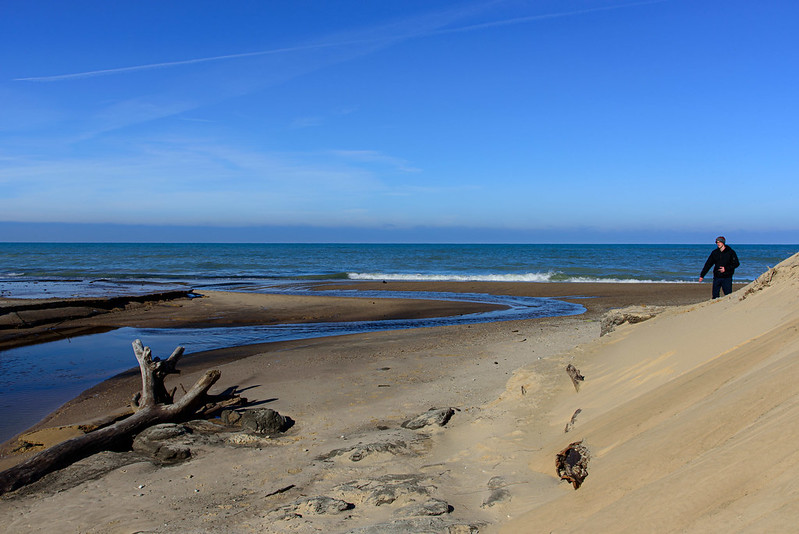
The cold weather finally arrived in Northwestern Indiana, cold enough to begin the process of freezing the beaches. This ice on the shore of Lake Michigan is the first step in creating what often becomes mountains of ice that extends hundreds of feet into the lake. It all starts with the wet sand freezing in place, then each additional wave brings more water up to freeze. This is a very slow process at first, but once the weather gets cold enough to create ice on Lake Michigan, the waves push that ice onto shore where it quickly builds into 10 to 15 foot tall mounds. Right now, the sand appears wet, but it's actually frozen, and in some places very slippery, so walking where the waves are still active is usually the best bet right now. The water is preventing ice from forming right at the shore, so it's easier to walk here. Even the parts of the beach and dunes that are usually soft sand are frozen; walking up the hill of sand to the Central Beach access is quite difficult because your feet don't sink into the sand, the just slide off.

At least the frozen sand protects the beach a bit from erosion, erosion that has collapsed so many of the dunes in this new National Park. The shelf ice and mounds that will most likely form soon, will protect it even more, and offer a unique opportunity for people to view these natural ice sculptures. As long as they staff off and away from these mounds - they are unsafe and can be deadly.







































